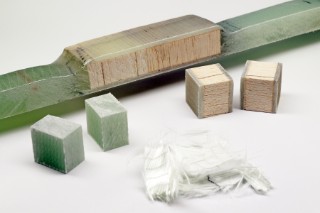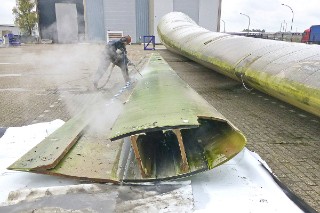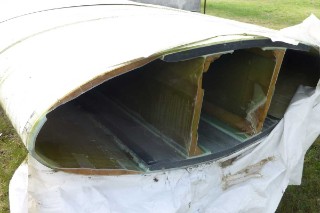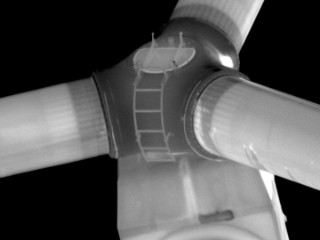Bio-based and recyclable wind turbines through research at the Fraunhofer WKI
Autumn is here and with the strengthening winds, the yields generated by wind energy are also increasing. This environmentally-friendly and renewable form of energy generation creates jobs in Germany and promotes technological innovation. Wind energy reduces the dependence on fossil fuels and global supply chains. Researchers at the Fraunhofer WKI are developing solutions that facilitate the inspection of rotor blades. Completely new recycling processes – which are being developed at the Fraunhofer WKI – pursue the goal of achieving the best-possible material recycling. The work of the scientists contributes towards ensuring that, from the outset, wind turbines can be designed to be easier to recycle and can be manufactured from renewable raw materials. As a result, the key technology of the energy transition is becoming both more recyclable and more resource-efficient.
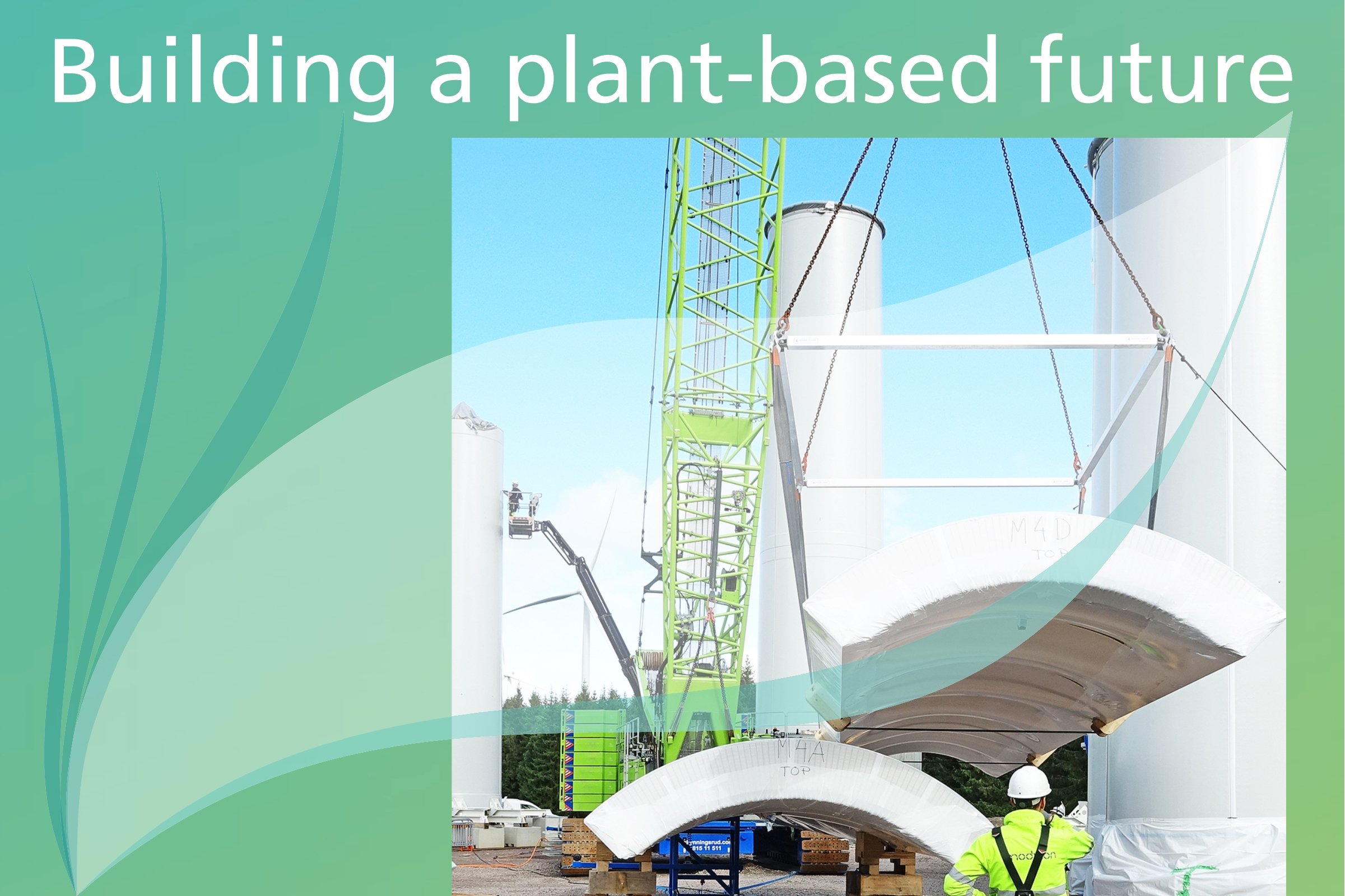
The Fraunhofer WKI develops sustainable material and recycling solutions for wind turbines based on renewable raw materials.
The aim of the EU’s climate target is, by 2030, to reduce CO2 emissions by 55 percent compared to 1990. The EU wants to be climate-neutral by 2050. The expansion of electricity generation from wind energy hereby plays a major role. Around 30,000 wind turbines have already been erected in Germany. By 2030, the German government intends to approximately double the installed onshore wind-power capacity and to triple the offshore capacity. With the growing number of wind turbines and their longer service life, the issues of maintenance and recycling are becoming increasingly important.
Efficient maintenance of rotor blades
The rotor blades of wind turbines are subjected to high stresses. Damage can have serious consequences, as a result of which wind turbines undergo regular maintenance inspections. Until now, service technicians have had to climb the wind-turbine towers, some of which are more than one hundred meters in height. In collaboration with partners, researchers from the Fraunhofer WKI are developing maintenance concepts which, with the aid of drones, will eliminate the need for working at extreme heights and, consequently, will considerably simplify the inspections.
Innovative recycling processes for high-quality material recycling of rotor blades
With innovative recycling processes for the recovery of balsa wood and plastic foam from the rotor blades of wind turbines, researchers at the Fraunhofer WKI are providing an important contribution towards increasing the recyclability of wind turbines. Using a new process, the fiber-reinforced plastic from the rotor blades is to be broken down into its constituent parts by means of pyrolysis in order to recover the utilized fibers and to recycle them industrially. The researchers perform a wet-chemical treatment on the glass and carbon fibers, in which the fibers are equipped with a bonding agent in preparation for the next application. This enables several fiber layers to be wet-chemically treated and subsequently impregnated in one single step, without their having to be laboriously separated beforehand. This could significantly simplify the recycling of rotor blades.
In addition to recycling solutions for existing rotor blades, researchers at the Fraunhofer WKI are also developing solutions for new rotor blades with minimized recycling expenditure. Rotor blades consist of complex multi-material composites - firmly bonded by duroplastic resins. In collaboration with partners, the scientists are testing whether rotor blades with detachable resin systems can be constructed in such a way that the individual materials can be separated by type at the end of their useful life.
Whether entire parts of old rotor blades can be used for new, smaller rotor blades is also being investigated by the researchers at the Fraunhofer WKI in collaboration with project partners. For this purpose, switchable adhesives are being tested which can be switched on and, after the end of their useful life, switched off again, thereby improving recyclability.
Wind turbines made from renewable raw materials
However, it is not only improvements in recycling and maintenance that are making the key technology of wind energy increasingly attractive. The experts at the Fraunhofer WKI are helping to ensure that the construction of wind towers or rotor blades can become more sustainable through the utilization of wood or other renewable raw materials. Compared to conventional wind turbines made from concrete or steel, the timber construction method enables CO2 savings of up to 90 percent. Researchers from the Fraunhofer WKI supervised the bonding of the first-ever wooden tower for commercial wind turbines – produced by the company Modivon AB – at the construction site. In a further project, researchers are examining the extent to which renewable raw materials can be implemented in the construction of rotor blades.
Last modified:
 Fraunhofer Institute for Wood Research
Fraunhofer Institute for Wood Research 
